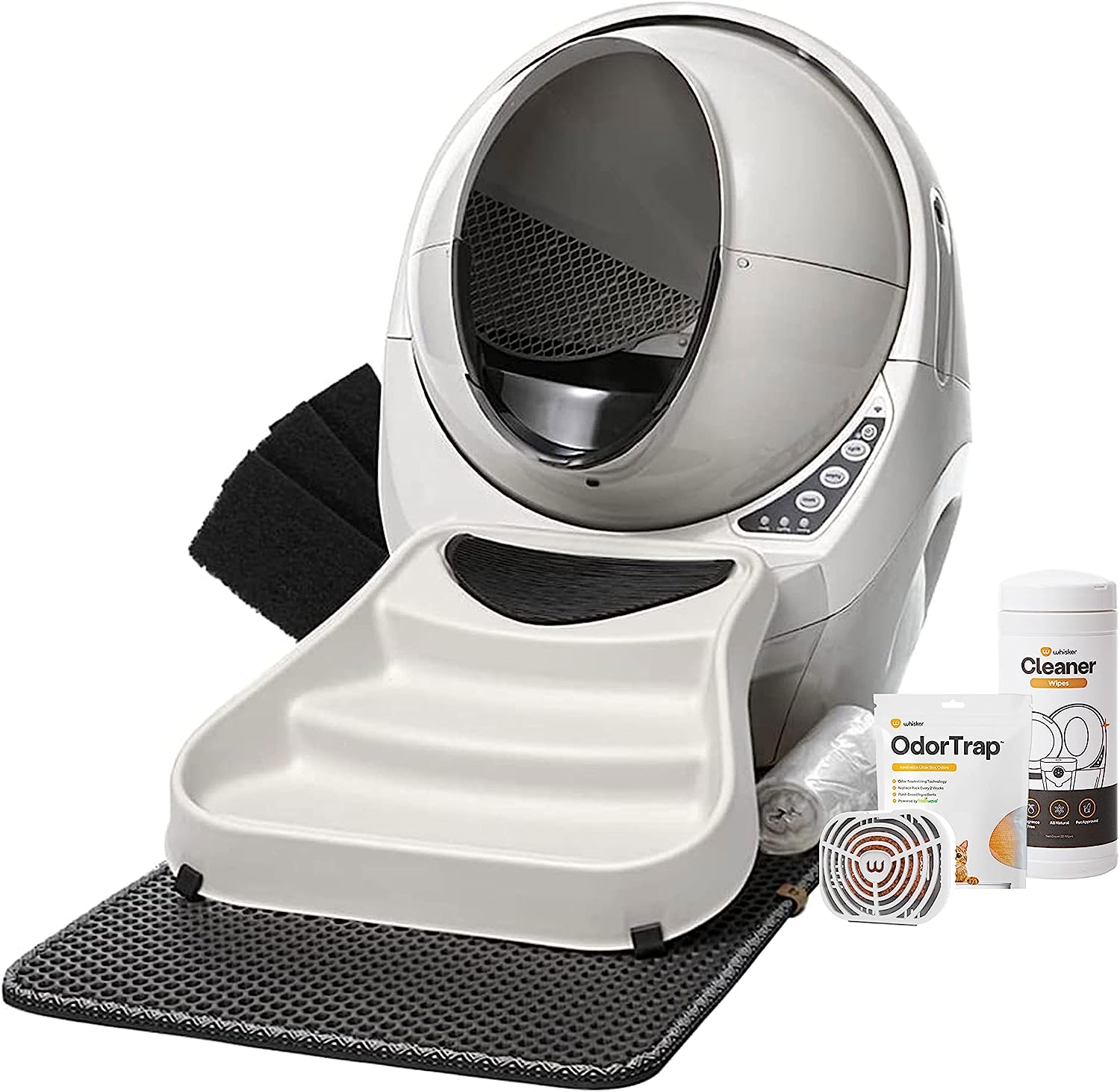iHeartDogs is reader-supported. When you buy via links on our site, we may earn an affiliate commission at no extra cost to you.
Feline Inappropriate Urination (urinating outside the litter box) is a common and frustrating problem. I see this complex issue regularly and it’s not easy to manage. Sadly, people don’t understand what motivates cats and many felines find themselves surrendered to animal shelters or destroyed because of this problem.
To understand the complexity of this issue, we must first consider who cats are as a species and who we expect them to be as our house pets. It’s a high expectation for a cat (who is descended from wild urine marking felines) to urinate in a solitary place that we have designated. They’re ancient DNA tells them to spread their smells throughout thier territoty. So, just going in one spot isn’t something wild cats are used to. Thankfully, felines are smart and quickly pickup the idea of going in a box. And it’s our job to set our cats up for success by making this habit as preferable as possible for them.
If your cat has always used her litter box and then, suddenly isn’t, you must answer some important questions for thier sake and yours.
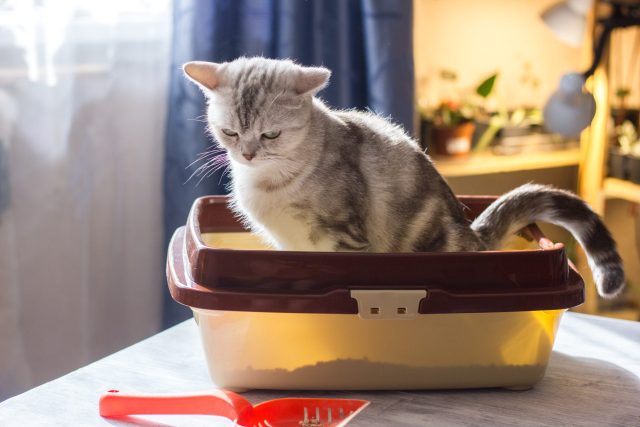
Related: The 11 Best Litter Boxes for the Purrfect Potty Experience
Could there be a medical reason for your cat’s habit change?
Setting up a appoint with your veterinarian to see if your cat has a medical issue should be your first order of business. If your cat has a medical reason for inappropriate urination, like urinary tract disease, diabetes or orthopedic pain, any attempts you make to solve the litter issues will fail. And even worse, an untreated medical problem can become a behavior problem that lingers long after the inciting cause if not promptly identified and managed.
Once medical causes have been ruled out or managed, behavioral causes can then be explored and addressed.
Causes of inappropriate urination can be related to aversions, preferences or marking/stress:
- Aversions (dislikes): Cats can develop a distaste for certain litter boxes, locations, or types of litter. Consider if you have changed anything or failed to clean the box as often as usual. Maybe you’re using a new cleaner? Have you changed to a new litter? Tried a new box? Changed your routine for cleaning?
- Preferences (likes): Cats can refuse to use a box if they prefer something different. Some cats love a very clean box. Some cats like a covered box and some like an open one. Some cats like a quiet and hidden place for their box and if their parent has moved it, there might be a preference issue.
- Marking/Stress: If you’ve added a new cat or your cat can see a new cat from the window, they may react by urine marking. This is even more likely if you have an intact feline or a cat that sprays urine while standing. Other factors, like moving to a new home, visitors, a new baby, or remodeling, can also cause stress-related urine marking.
Sometimes you may never know what the specific cause is, but (as long as you know there is no medical problem) there are some steps you can take to try to head-off this issue. Now, here are the steps I give my clients when they’re dealing with inappropriate urination in an otherwise healthy cat.
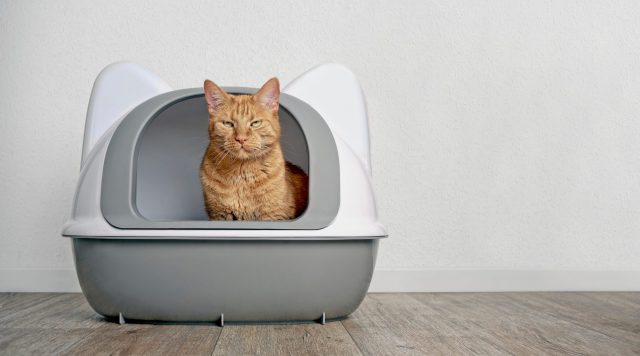
Litter Box Tips From a Veterinarian
Number of boxes:
Behaviorists and veterinarians say you should provide one litterbox per cat in the home, plus an extra. This allows lots of options for the cats. which is something we know cats prefer! And if a territorial dispute deters one cat from a certain box, you want to provide easy alternatives. Simply put, the more potty options, the better everyone gets along.
Litter types:
I tell people to set up a litter trial for cats, confining them to an area where litterbox use is the only option, like a bathroom or small tiled area. Give cats different choices of litter types and see which they choose. Many of my clients’ parents like the fragranced clumping litters, but some of my actual patients (the cats) do not. Cats have senstive notices, so many of them are put of by strong or artificial smells. Stick with frangrance-free litter when possible.
Choose a variety of litters, clumping, sandy, clay, pine, etc. and make them available for a long enough time to tell what your cat chooses. While performing the litter trial, try to use similar open-style litter boxes so as not to confuse your cat in regards of the actual pan.
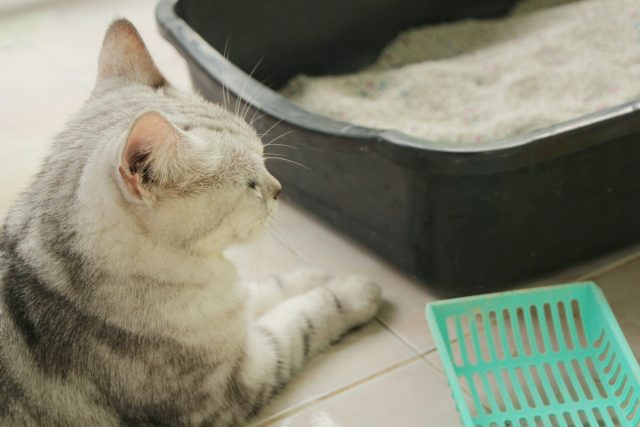
Litter box type:
Once you have established a litter type that your cat likes, choose the best box type too. I had a patient that developed an inappropriate urination issue when his mom switched him to a self-cleaning litter box. She thought the expensive gadget would make his life better by keeping his box ultra-fresh, but he seemed to be afraid of the noise it made. Many times our cats will not conform to what we want and we are better off finding a compromise that we can all live with. While this kitty didn’t care for an automatic litter box, some cats love them.
If your cat is one who loves an super clean litter box and doesn’t mind some automation, the Whisker Litter-Robot 3 Connect Pro is a revolutionary solution that can help the problem of cats peeing outside the litterbox. With its advanced technology and smart connectivity features, it offers a comprehensive and effective approach to maintaining a clean and odor-free environment for both cats and their parents. The Litter-Robot 3 Connect Pro utilizes a patented sifting mechanism that automatically separates clumps from clean litter, ensuring the box remains consistently clean. By eliminating the need for manual scooping, it reduces the chances of neglecting or overlooking soiled areas, which often lead to cats seeking alternative spots.
The Litter-Robot 3‘s integrated connectivity allows parents to monitor their cats’ litterbox habits through a companion app, providing valuable insights into any changes in behavior that might contribute to inappropriate elimination. Overall, the Whisker Litter-Robot 3 Connect Pro offers a hassle-free and efficient solution to help cat owners address the issue of cats peeing outside the litterbox and promote a healthier and happier environment for both cats and their human companions.
- Advanced sifting mechanism separates clumps from clean litter
- Automatic cleaning eliminates need for manual scooping
- Helps maintain a consistently clean, odor-free litterbox
- Smart monitoring through companion app
- Provides insights into cat's litterbox habits & changes in behavior
- Reduces chances of cats peeing outside the litterbox
- Promotes a healthier & happier environment
Related: 8 Best Self Cleaning Litter Boxes for Cats
To find out what kind of box your kitty wants, give your cat options. Choose easy-to-clean litter boxes, some covered, and some not. Some should have low sides and some high sides and some should be large and others small (but all large enough for your cat to easily turn around in).
Cleaning and cleaner type:
Clean boxes by scooping at least once daily, more often if your trying to break bad litter box habits. Empty completely and clean boxes each week. Use a mild soap and rinse thoroughly. If the boxes still smell after cleaning, replace them.

Clean, clean, and more clean:
Encourage your cat to make good choices by offering good options. Make sure you find and clean areas of inappropriate urination thoroughly. You may need a professional cleaning service to help. Try to block areas where the wrong behavior has taken place and confine your cat to areas where the litterbox is the easiest choice until the habit becomes well established again. Be prepared; this could take 2 weeks or more. Isolation will also help if your cat is stressed or marking because of another cat in your household or outside.
Entertainment and distraction:
It’s always a great strategy to provide your cat with environmental stimulation. Our cats are descended from wild ones that hunt and patrol. They had to use their brains and their bodies to survive. Today, they use thier cuteness to by!
When we bring animals into our home, it’s our responsibility to enrich their environments as much as possible. I am a big fan of puzzle toys for all pets as cats must figure out how to get the food reward by rolling or manipulating the toy. Make sure cats have places to scratch, climb and relax. Cats also need to be able to count on you for attention each and every day. Encourage exercise with fun solo play and interactive toys. And cuddle time are is just as important as playtime!
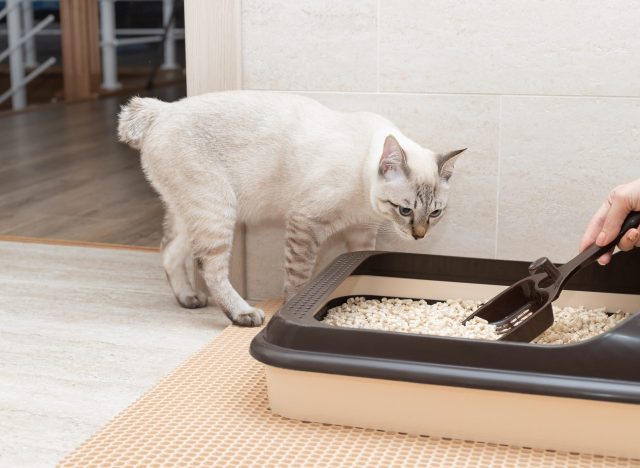
On Your Way
After you’ve made sure your cat has no medical reason for the improper elimination, figured out which type of litter, location and box your cat prefers, reestablished good litter box habits by retraining. cleaned and discouraged the undesired locations, you should be well on your way to returning your home to a place that you AND your cat want to be.

